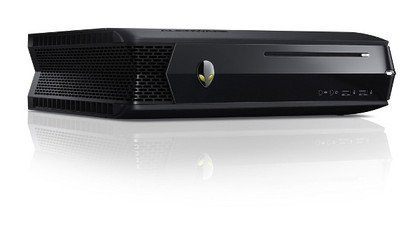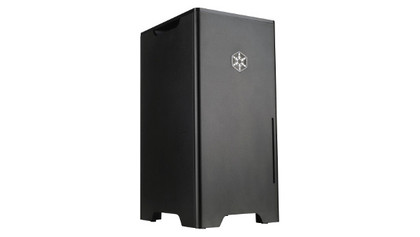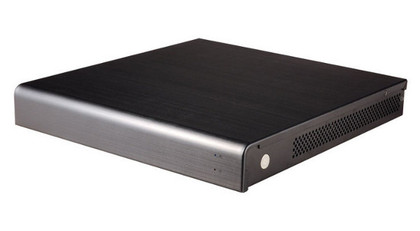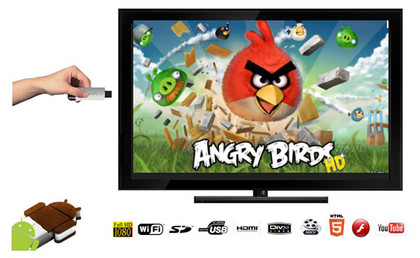Why small is the future for desktop PCs
Say so long to silly sized systems

Big PCs are going the way of big lizards and being evolving into extinction, and we should rejoice and be thankful for it. There are blessedly few reasons to want noisy towers in your home any more, and for most of us there's little need for anything larger than a shoebox to do all the things we can't yet use our tablets for.
Consider this. Back in 2008, when EA released its legendarily demanding game Crysis, only the fastest PCs in the world were capable of playing it smoothly. The ideal system would have been a Core 2 Quad processor, preferably overclocked, a high end motherboard and at least one GeForce GTX 8800 Ultra card. Trying to cram those components into anything less than a full tower case would have resulted in huge problems with cooling and system stability.
Just four years later and a high end system with a Core i7 CPU and GeForce GTX 670 graphics card has more than five times the gaming prowess for a similar cost, but you can squash the parts into a micro-ATX case and not think twice about whether or not they're going to get a bit warm while it's running. We know, because that's exactly one upgrade we've just done in the office.
When even hardcore PC customisation websites like Bit-Tech start running features about why small is more interesting than the giant watercooled rigs of yore, you know something's up.
And as Apple's latest ultrathin but technically superlative MacBook Pro proves, size really isn't important when it comes to processing power any more.

Tablets and laptops aside, the trend for small form factor PCs can be broadly split into three parts. First off, there's the bargain basement 'nettop'. Almost as soon as the first Intel Atom-powered netbooks arrived in 2007, they were followed by 'nettops', which were essentially the same thing but without a keyboard, mouse and monitor built in. Curiously, they often cost a little bit more than their budget laptop brethren.
Early nettops were OK, but the Atom's performance was uninspiring for the cost compared to sub-£300 PCs lining the shelves in Currys. What's changed recently, largely thanks to AMD's Fusion processors, is that a PC barely bigger than a DVD case now has more than enough processing and graphics power for just about all your tech needs.
Get daily insight, inspiration and deals in your inbox
Sign up for breaking news, reviews, opinion, top tech deals, and more.
Zotac's latest nettop, the excellent Zbox nano AS AD11 Plus costs just £300 and features an AMD E-450 processor with Radeon HD 6320 graphics. That's plenty of poke for most desktop needs outside of 3D gaming, and the graphics part is pretty good for video encoding too. Plus it's virtually silent compared to budget AMD chips of old.
For full power PCs, meanwhile, there's been a rush to shrink the latest and greatest motherboard tech down to the smallest size. There are three key classes of motherboard size: ATX is the traditional one, with full tower dimensions; micro-ATX is slightly smaller, but with the same types of components on board; mini-ITX is the smallest of all, usually found in basic systems like NAS servers or flashy in-car entertainment systems.
Motherboard dimensions
ATX:
305x244mm
Micro-ATX:
244x244mm
Mini-ITX:
170x170mm
Just a few years ago anything other than an Atom or VIA-based mini-ITX system was rare and would have cost the Earth. Then Zotac (again) began releasing high end chipsets in mini-ITX size, and now every other motherboard manufacturer is racing to catch up.
As a result, an Asrock mini-ITX motherboards with Intel's finest Z77 chipset on board is now barely more expensive than a full sized Z77 alternative which, although costing more in raw materials, has economies of scale behind it to lower the price.

What would you put your mini-ITX board into, though? Up until very recently, you've been limited for choice, particularly if you wanted to include a power supply capable of running a decent graphics card and with enough space for, say, a dual width graphics card too.
Silverstone's beautiful Fortress FT03 Mini is kicking around the office at the moment though, admittedly a little larger than most mini-ITX chassis, but exceptional for a tiny gaming system.
Thin is in
Then there's the new kid on the block, Thin mini-ITX. This was developed by Intel last year and is designed around mini-ITX specs, but without requiring vertically mounted heatsinks – similar to a laptop innards. There were a lot of very attractive Thin mini-ITX systems and cases on display at Computex earlier in June. These included the gorgeous Lian-li PC-Q05, which is a beautiful little slab of aluminium for housing your PC in.
Thin Mini-ITX as a form factor is also interesting for putting PCs inside other things – Windows 8 all-in-ones, for example. Chinese firm Wibtek, for example, is developing 'keyboard PCs', which boast a Core i7 system in a simple keyboard.

It's not all about traditional x86 PCs and Macs, either. Thanks to iOS and Android, and some pretty incredible work from Samsung, Apple and Nvidia, ARM processors have come into their own lately and are breaking out of phones and tablet cases to power some of the most interesting, and tiniest, computers around. There's the Raspberry Pi, of course, and its $49 rival, the Via APC, but several companies also showed off USB sticks with embedded processors running Android last week, which can simply be plugged into the side of a TV to become a fully fledged computer.

For all that small is beautiful, though, it is worth pointing out that the big gaming PC as we know it is likely to be around for a while longer. While most system builders we spoke to agree they are selling more small form factor machines than before, many high end specialists - like Chillblast and Overclockers - aren't. And globally, demand for top end gaming motherboards is growing rather than shrinking.
Those who want or need a top spec PC the size of a small fridge, then, will continue to buy them and manufacturers will carry on finding profitable markets there. For everyone else, though, small is definitely the future.